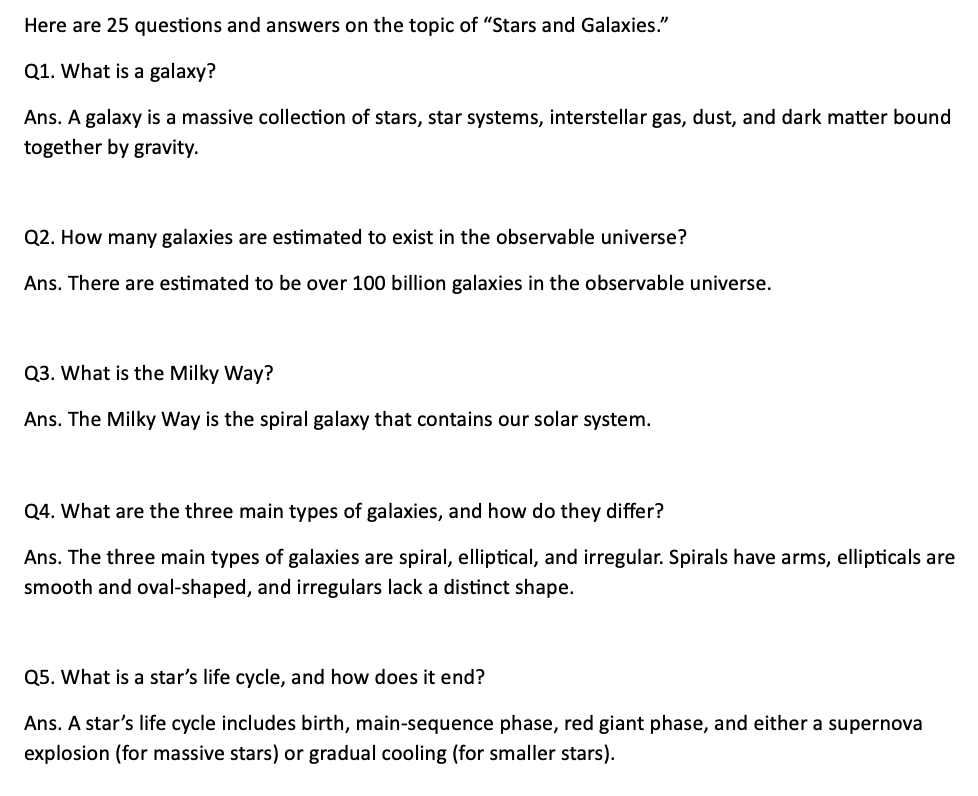Stars and Galaxies 101 (Grade A)
Summary:
The document provides a comprehensive Q&A on “Stars and Galaxies 101,” covering key concepts and phenomena in astronomy. A galaxy is a massive collection of stars, star systems, and other celestial matter bound by gravity. The Milky Way, our home galaxy, is one of over 100 billion estimated galaxies in the observable universe. Galaxies come in three main types: spiral, elliptical, and irregular, each with distinct characteristics. Stars have life cycles that include various phases like the main sequence, red giant, and either a supernova explosion or gradual cooling. Supernovas are crucial for the formation of new stars and galaxies.
Astronomers use parallax, Cepheid variable stars, and redshift to measure distances to celestial objects. The Hubble Space Telescope has provided high-resolution images and data on distant galaxies. Dark matter, an invisible substance, is vital in galaxy formation and stability. Black holes, regions with extremely strong gravitational forces, are formed from the collapse of massive stars. The Big Bang theory serves as the framework for understanding the universe’s origin and the formation of galaxies. Powered by supermassive black holes, Quasars offer insights into the early universe.
Other key terms include open and globular clusters, which are groups of stars that are either loosely or densely packed. Stars are classified based on their spectral characteristics using the OBAFGKM system. Neutron stars are the dense remnants of massive stars after a supernova. The cosmic microwave background radiation is the afterglow of the Big Bang and provides valuable information about the early universe. Nuclear fusion is the process by which stars produce energy.
Excerpt:
Stars and Galaxies 101
Here are 25 questions and answers on “Stars and Galaxies.”
Q1. What is a galaxy?
Ans. A galaxy is a massive collection of stars, star systems, interstellar gas, dust, and dark matter bound together by gravity.
Q2. How many galaxies are estimated to exist in the observable universe?
Ans. There are estimated to be over 100 billion galaxies in the observable universe.
Q3. What is the Milky Way?
Ans. The Milky Way is the spiral galaxy that contains our solar system.


Reviews